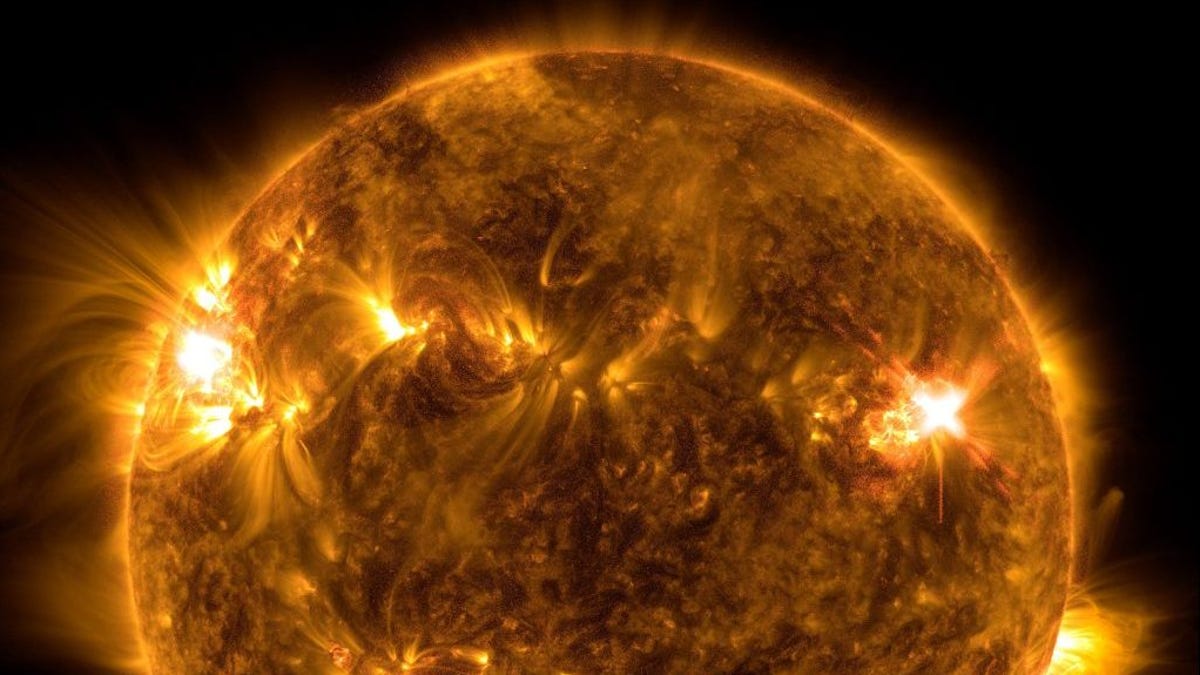NASA Catches Sun Spitting Out a Dazzling X1 Solar Flare
The sun is so hot right now.
It's party time on the sun. Our host star's been ramping up its activity lately, and it delivered an impressive X1 solar flare on Sunday. NASA's Solar Dynamics Observatory caught sight of the big burst of radiation. The major flare appears as a bright spot on the right side of an image shared by NASA on Monday.
That bright flash circled in red is the X1 solar flare from Oct. 2, 2022.
The sun's solar flares are categorized in classes. An A-class flare is weak, while X-class flares are the strongest. X-class flares are given numbers, with higher numbers noting more intense flares. Researchers measured a whopping X28 flare back in 2003.
The X1 is the sun's latest volley this year. It spit out an X2.2 in April. "Flares and solar eruptions can impact radio communications, electric power grids, navigation signals, and pose risks to spacecraft and astronauts," NASA said in a statement. These outbursts can also lead to increased aurora activity, feeding into beautiful swirling lights in the sky.
The sun goes through 11-year solar cycles where its activity waxes and wanes. It's currently in Solar Cycle 25 and ramping up as it heads toward solar maximum in 2025. That means we can expect more eye-catching flares in the near future.


